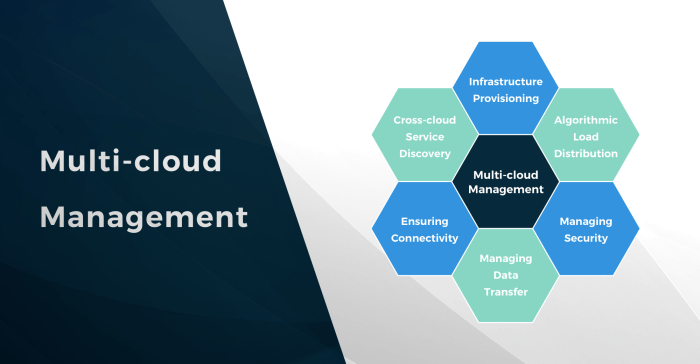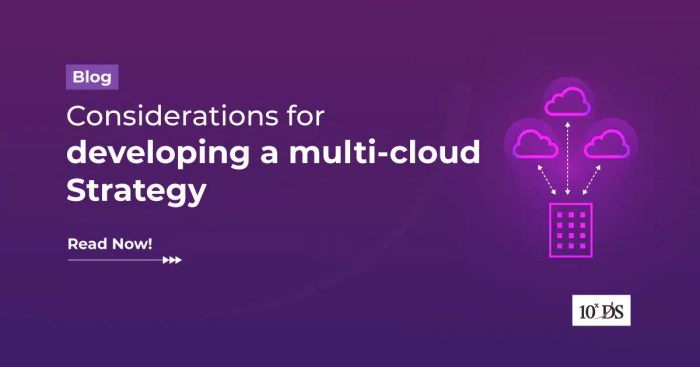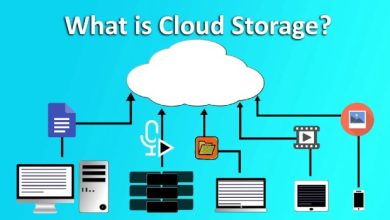Key Considerations for an Effective Multicloud Networking Strategy
Key Considerations for Implementing an Effective Multicloud Networking Strategy – Implementing an effective multicloud networking strategy is crucial in today’s digital landscape. This guide explores the key considerations to ensure seamless connectivity, security, and cost optimization in a multicloud environment.
As businesses embrace the flexibility and scalability of multicloud architectures, navigating the complexities of network design, interconnectivity, security, management, and cost optimization becomes essential. This comprehensive guide provides a roadmap to address these challenges and unlock the full potential of a multicloud networking strategy.
Network Architecture and Design

Designing a multicloud network architecture is critical for meeting specific business requirements and ensuring optimal performance. Choosing the right network topologies and protocols is essential to optimize network performance and reliability across multiple clouds.
Key considerations for implementing an effective multicloud networking strategy involve understanding the organization’s specific requirements, evaluating cloud providers, and ensuring security and compliance. As enterprises embrace digital transformation, cloud internet services play a pivotal role in enabling seamless connectivity and optimizing network performance.
These services provide dedicated internet access, ensuring high bandwidth and low latency, which are crucial for supporting mission-critical applications and delivering a superior user experience. By integrating cloud internet services into their multicloud networking strategy, enterprises can enhance their overall network efficiency, agility, and cost-effectiveness.
Network Topologies
Selecting the appropriate network topology is crucial. Common topologies include:
- Hub-and-spoke: Connects all cloud environments to a central hub, providing centralized control and security.
- Mesh: Establishes direct connections between all cloud environments, offering redundancy and load balancing.
- Hybrid: Combines hub-and-spoke and mesh topologies, providing flexibility and scalability.
Network Protocols
Choosing the right network protocols is essential for interoperability and performance. Consider the following:
- IPsec: Provides secure communication over IP networks.
- VXLAN: Enables Layer 2 network extension over Layer 3 networks.
- GRE: Tunnels traffic over IP networks, providing flexibility and scalability.
Performance and Reliability
Optimizing network performance and reliability is crucial. Consider the following strategies:
- Load balancing: Distributes traffic across multiple paths to improve performance and redundancy.
- Traffic shaping: Prioritizes traffic based on specific criteria to ensure critical applications have consistent performance.
- Network monitoring: Continuously monitors network performance and identifies potential issues proactively.
Network Management and Monitoring: Key Considerations For Implementing An Effective Multicloud Networking Strategy

Managing and monitoring a multicloud network presents unique challenges due to its distributed nature and the involvement of multiple cloud providers. To effectively manage and monitor such networks, organizations need to adopt a centralized approach that provides visibility and control across all cloud environments.
Centralized Tools and Dashboards
Centralized tools and dashboards offer a single pane of glass for managing and monitoring multicloud networks. These tools provide real-time visibility into network performance, traffic patterns, and security events. They enable network administrators to quickly identify and resolve issues, ensuring optimal network performance and security.
Automated Monitoring and Alerting, Key Considerations for Implementing an Effective Multicloud Networking Strategy
Establishing automated monitoring and alerting mechanisms is crucial for proactive network management. These mechanisms continuously monitor network metrics and generate alerts when predefined thresholds are exceeded. This enables network administrators to quickly respond to potential issues and prevent them from escalating into major outages.
Cost Optimization

Optimizing the cost of a multicloud networking solution is crucial for any organization seeking to leverage the benefits of multicloud without breaking the bank. This section delves into strategies for achieving cost optimization in multicloud networking.
Leveraging cloud pricing models and negotiating with cloud providers is key. Different cloud providers offer varying pricing models, including pay-as-you-go, subscription-based, and committed use discounts. Understanding these models and negotiating favorable terms with providers can significantly reduce costs.
Implementing cost-saving measures such as traffic shaping and load balancing is also essential. Traffic shaping allows you to control the flow of network traffic, prioritizing critical applications and optimizing bandwidth utilization. Load balancing distributes traffic across multiple servers or cloud instances, ensuring optimal resource utilization and reducing the need for overprovisioning.
Concluding Remarks
By following the key considerations Artikeld in this guide, organizations can establish a robust and efficient multicloud networking strategy that meets their specific business requirements. Embracing a multicloud approach empowers businesses with the agility, scalability, and cost-effectiveness needed to thrive in the modern digital era.
Key Considerations for Implementing an Effective Multicloud Networking Strategy include understanding the different types of cloud networking models, the benefits and drawbacks of each, and the security implications. To maximize business efficiency, it is essential to have a comprehensive understanding of the available cloud internet services.
Maximizing Business Efficiency with Cloud Internet Services A Comprehensive Guide provides valuable insights into this topic. By considering these factors, organizations can develop a multicloud networking strategy that meets their specific needs and enhances their overall business efficiency.
As you navigate the complexities of multicloud networking, it’s essential to consider the key elements outlined in this article. To further your cloud journey, explore our comprehensive guide, Migrating to the Cloud Step-by-Step Guide for Seamless Transition . This valuable resource provides a structured approach to cloud adoption, empowering you to optimize your multicloud strategy and reap its full benefits.





